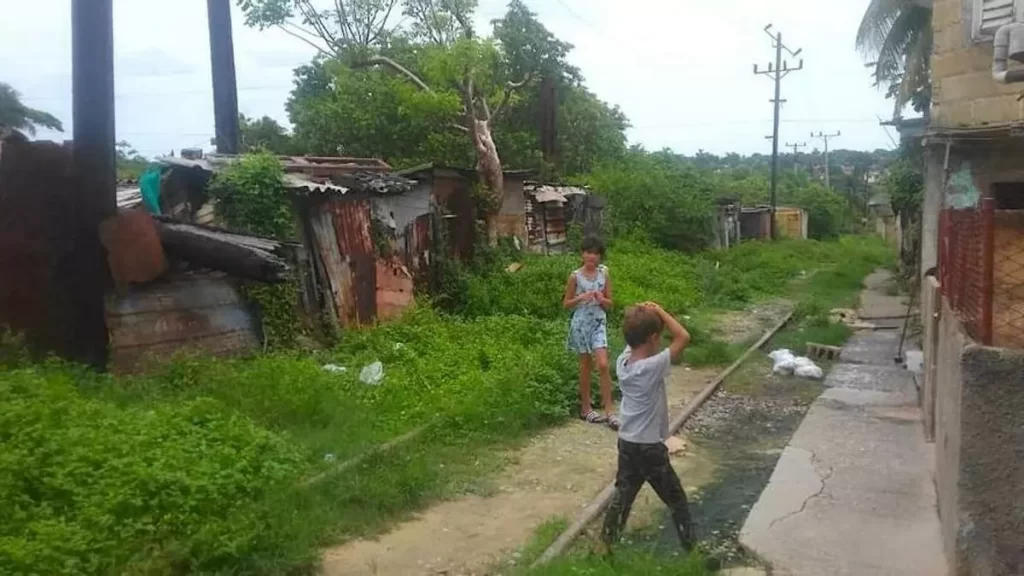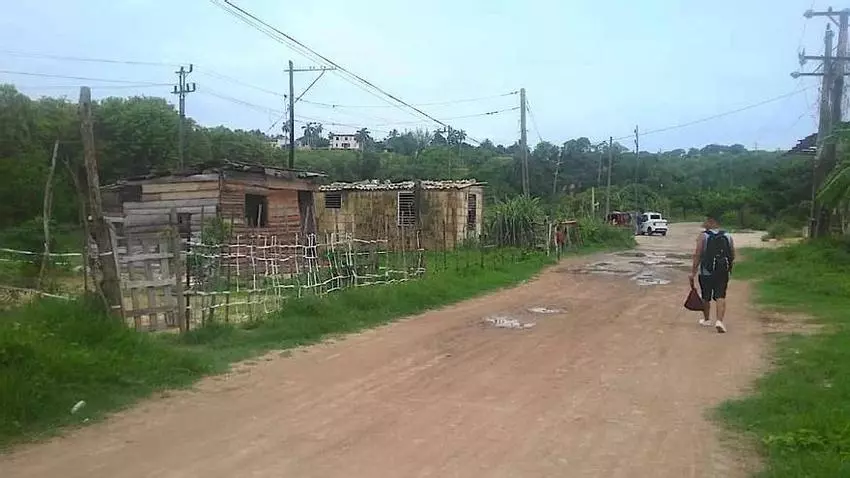Octavio, Yuneisy and Marcos tell of the difficulties in obtaining decent housing

![]() 14ymedio, Julio César Contreras, Matanzas, 22 June 2024 — The reality of those who live on the outskirts of the city of Matanzas, Cuba, does not appear on postcards and much less in the press or official broadcasts. Barely habitable houses – built with precarious materials – lack of basic services, stagnant water and garbage is the landscape that Octavio sees every morning when he travels along the unpaved roads to his work.
14ymedio, Julio César Contreras, Matanzas, 22 June 2024 — The reality of those who live on the outskirts of the city of Matanzas, Cuba, does not appear on postcards and much less in the press or official broadcasts. Barely habitable houses – built with precarious materials – lack of basic services, stagnant water and garbage is the landscape that Octavio sees every morning when he travels along the unpaved roads to his work.
The makeshift neighborhood where Octavio and his family live used to be a landfill and is located just eight blocks from Liberty Park, in the center of the city. Eleven years ago, when the 57-year-old man arrived from Camagüey with his wife and son looking to “make his way,” the area was very different from what it is today.
“Where I currently live there used to be a huge garbage dump, very close to the San Juan River. Little by little and with a lot of effort, I put block on block and was able to put up a plate roof. I went through quite a lot of difficulties to get ownership of the land, and in the end I had to spend a lot of money to get my house,” he tells 14ymedio.
Octavio did not choose Matanzas by chance, but relied on a niece who lived in the city to help him establish himself
Octavio did not choose Matanzas by chance, but rather he relied on a niece who lived in the city to help him establish himself. Now that he has managed to build the house, although he has only built three rooms, and changed his address to Matanzas, he feels calmer. “At least they can no longer call us ‘illegal’ or send us to Camagüey,” he explains.
What has taken the Camagüeyan more than a decade, is something that people in worse situations never achieve. The peripheral hamlets, which began as small settlements of one or two improvised homes, in a short time have expanded to the limits of neighborhoods such as Versalles, La Marina or Peñas Altas. “I am lucky, because I even managed to make a slab, but many people live in zinc sheds of two or three square meters, sometimes without water or electricity,” he laments.
Octavio’s description matches the situation of Yuneisy, a 27-year-old single mother. The young woman came to Matanzas in 2022 with her partner, and together they built a small house made of zinc plates and some blocks in which she now resides alone with her daughter. “We live about ten meters from the train line. My little house is made with what was found at the time and there is only one room, with an electric stove for cooking. My daughter and I bathe right there, and we relieve ourselves outside,” says Yuneisy.
Last year, the young woman went to the provincial government to raise her housing problem and, although the authorities assured her that they are “analyzing” the situation, so far they have not offered her concrete alternatives. “We are going through a lot of needs, but if we return to my town it will be worse, because there is no hope for anything there,” says the woman from Santiago.
Within the city the situation is not so precarious, but the housing stock and the neighbors suffer from other problems. In the absence of housing, many families have settled in tenements and interior patios, where the eyes of the inspectors cannot reach. They live overcrowded, with up to four generations sharing a small house, and the shortage of materials – or high prices – slows down the construction of their own homes or their repair, which is why many buildings are in a deplorable state.

For those who rent, the situation is even worse. “I have been renting for several years, because with the salary of a professional like me you cannot even build a room,” says Marcos, a young man who moved to the provincial capital from the municipality of Jagüey Grande seven years ago.
“The price of rent has risen exaggeratedly. Today the cheapest thing you can get is a room for 5,000 pesos, with nothing inside and in a bad place. A decent rental costs at least 10,000 pesos. Not to mention renting houses or apartments, which are above 15,000, and many of them in dollars or MLC (freely convertible currency),” lists the young primary school teacher, who has had to look for “extra jobs” to pay rent and other expenses.
Marcos says that a few weeks ago, taking advantage of the beginning of summer, he went to Varadero with some friends. “It’s incredible to see how everything is falling apart in Matanzas while every time I go [to Varadero] one or two new hotels are being built,” he says outraged. “That thing of raising a house daily – a promise that the regime has not mentioned again since 2019 – ended up being one collapse a day.”
See also: Article from 2021 about housing in Santiago de Cuba
____________
COLLABORATE WITH OUR WORK: The 14ymedio team is committed to practicing serious journalism that reflects Cuba’s reality in all its depth. Thank you for joining us on this long journey. We invite you to continue supporting us by becoming a member of 14ymedio now. Together we can continue transforming journalism in Cuba.
